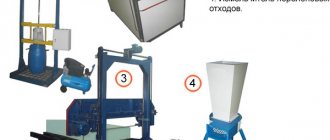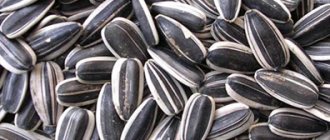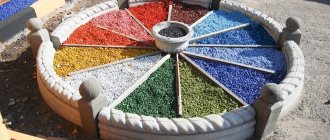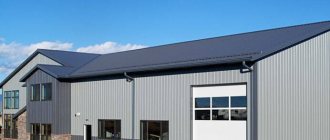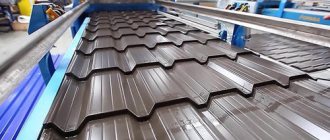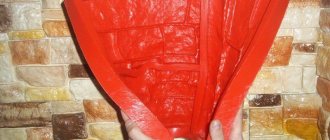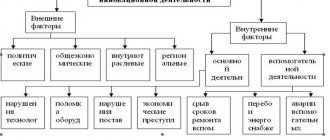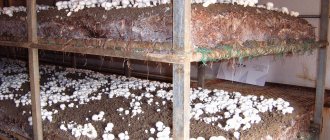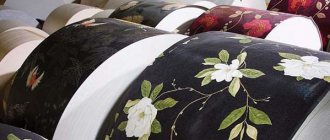SIP technologies are widespread in Canada, the USA, Western and Northern Europe. In Russia, this technology is also becoming increasingly popular. The advantages of structures made from such panels are beyond doubt. And the process of constructing buildings itself allows you to reduce the time for constructing comfortable and practical housing. Due to the growing popularity of this technology, the production of sip panels can become a good business. If you are looking for where to invest your money, then pay attention to the production of SIP panels. This needs to be done as quickly as possible, before the market becomes oversaturated with competitors.
What is a SIP panel
SIP is an insulating panel consisting of a layer of insulation, bonded on both sides with OSB sheets. Most often, foam is used as a layer, since it is cheaper and easier to cut. The very idea of using SIP panels came from Canadian house construction technology. Houses using Canadian technology are built very quickly, and in many respects they are superior to houses made of stone materials, including brick, foam concrete or aerated concrete. The beneficial properties of SIP panels in our country are still not fully appreciated. So, only 17 cm of thickness of the SIP panel in terms of thermal insulation replaces 2.5 meters of brickwork.
The difference in the cost of building a wall from SIP panels and brick is very large (not in favor of the latter). It is also worth noting the light weight of the product. 1 m2 of panel weighs no more than 20 kg, while a brick of this size will weigh more than 500 kg. That is, delivery of products will be much cheaper. Savings on loaders are obvious. A full-fledged house of 50 sq. m. m. can be erected from SIP panels in just three weeks. That is, in terms of short construction time, houses made from panels have no equal.
This material is also a leader in noise insulation and resistance to aggressive environments. The popularity of SIP panels as a building material in our country is increasing. Brick and other stone materials will gradually be replaced, since they are more expensive and require more time to lay. If the demand for SIP panels grows, it means that the production of this material will be more profitable and profitable for small businesses.
How the production process is carried out
There are a number of specific rules and requirements for the production of SIP panels in full compliance with European standards:
- all enterprise personnel must undergo special training and obtain the necessary qualifications to operate the machines;
- Among the employees of the enterprise there must be a professional technologist who will ensure strict control over both each stage of production and the finished product;
- For the manufacture of SIP panels, only the highest quality and safest raw materials should be used.
Back to contents
Panel composition
SIP panels may contain various types of modern materials, in particular:
- PSB – expanded polystyrene suspension non-shrinking boards;
- OSB – oriented strand boards;
- MV – mineral wool insulation;
- CSP – cement particle boards;
- EPP – extruded polystyrene foam;
- GKL – plasterboard sheets;
- FL – fiberboard.
In order for the finished product to be of the highest quality, the above-mentioned materials must be laid in a certain order. Among domestic consumers, SIP panels are in particular demand, which have the following design: in the center of the product there is a PSB board, and on the sides there is OSB. Be sure to take this point into account.
Back to contents
Manufacturing stages
These products are manufactured in several successive stages:
- Select the required combinations of materials - for example, OSB+PPU+OSP, GKL+PSB+GKL, OSB+PSB+OSP or another option that suits you.
- Each of the selected sheets is carefully coated with a layer of a special adhesive composition.
- A certain amount of water is sprayed directly onto the glue from above.
- Next, the process of laying the sheets on top of each other is carried out in strict adherence to the sequence.
- To distribute the adhesive layer as evenly as possible, all sheets are placed in a special press, where within 15 minutes, as a result of tight compression, the panel is completely glued together - the force of such a press is 18 tons.
- At the final stage, some of the finished SIP panels are sent for storage in a warehouse, and the other is cut in accordance with architectural plans: that is, all the necessary joining grooves are created, as well as window and door openings are cut out.
Only if all rules are strictly followed is it possible to produce high quality panels. There are special requirements for the glue used - it must be absolutely safe from an environmental point of view and not contain toxins or other hazardous components. Also, the mandatory characteristics of the glue used include high strength and resistance to moisture.
Back to contents
Premises for the production of SIP panels
To organize a mini production of SIP panels, at least 200 sq. m. area of the room. Utility networks require three-phase electricity, while water supply and sewerage may not be available. The requirements for such production are described in SanPiN 2.2.4.548-96. The room temperature should not be lower than +15 degrees. (so that the glue does not lose its properties). Therefore, for year-round production you will need to find a heated room. For 200 – 300 sq. m. you will have to pay at least 80,000 rubles. rent per month. The warehouse for finished products can be located outside, the main thing is to protect the slabs from direct sunlight. This can be done by building a canopy over an outdoor warehouse. In general, with proper work of the sales department, finished products will not be delayed in the warehouse, but will be immediately shipped for sale.
Production stages
Step-by-step instructions for making SIP panels:
- Sheet layout:
- The OSB material is laid out on the preparation platform of the machine;
- polyurethane glue and water are spread on the sheet;
- OSB-mtaerial is applied to the polystyrene foam board;
- Glue is applied in parallel to the polystyrene foam board, then water;
- OSB material is applied to the polystyrene foam sheet.
- Panel Connection:
- The sheets are sent along the conveyor to the press;
- sheets are pressed with a press with a force of more than 20 tons for 15 minutes;
- Cutting
After removal from the press, the resulting panels are placed in a warehouse. If architects order sheets with cutouts for doors and windows, cutting is carried out on a machine.
Raw materials for production
To organize production, you will need to find suppliers of three main components: OSB boards, foam plastic and glue. If you organize your own production of polystyrene foam, the savings on raw materials will be about 15%. However, the initial investment for the purchase of equipment will increase. Among the domestic suppliers of finished foam blocks, one can highlight the Angarsk Polymer Plant. Abroad, foam plastic is usually purchased from Perla, BASF, etc. OSB boards can be purchased from Russian and DOK Kalevala. Glue for SIP panels can be purchased from TOP-UR LLC, KLEIBERIT LLC or Avenir LLC.
Briefly about technology
We won’t write much about the technology, since enough has been written about it on specialized websites. In short, the technology looks like this. A board (OSB) is placed on a large table with its smooth side, the top of which is covered with glue. A sheet of polystyrene foam is glued to the plate, the upper part of which is also covered with glue. Then another OSB board is laid. It turns out to be a kind of sandwich (hence the name “sandwich panel”), consisting of two plates, in the middle of which lies polystyrene foam. The resulting structure can only be pressed under the hood of the vacuum press. SIP panel is ready for sale!
Which equipment to choose
The cost of a line for the production of SIP panels depends on the productivity and automation of the production process. So, to produce 50 panels per shift, it is enough to purchase a small line, including:
- Foam cutting machine – RUR 110,000.
- Manual glue application device – 4,500 rub.
- Compressor for glue application device – 32,000 rub.
- Mechanical press – 80,000 rub.
- Milling machine – 90,000 rub.
- Machine for cutting SIP panels – RUB 190,000.
- The total cost of the kit, including delivery and installation, will be approximately 550,000 rubles.
This equipment can easily be placed on an area of 100 square meters. m.
To operate this line, only 3 people are needed. When reaching a new level of production, it will be possible to purchase several automatic machines to speed up the process of producing products and reduce the need for personnel. Automatic glue application and pressing machines can help with this. The price of one machine is more than 1,000,000 rubles.
At the same time, the line productivity increases by 2.5 times, and the need for personnel is reduced to 2 people. On the Internet you can find videos that show how you can make SIP panels with your own hands without spending money on purchasing expensive lines. This, of course, is one of the options for starting a “business from scratch”, however, in terms of qualitative and quantitative indicators, such manual production will be ineffective and most likely unprofitable.
The benefits of making panels yourself
The cost of one panel made by yourself will be 20.5 USD/m²
As you can see, to make SIP boards yourself, you will not need many materials and tools. Your biggest expenses will be from the purchase of glue, insulation, OSB, vacuum pump or press. As a result, you will get an insulated, warm and durable home at an affordable price.
To calculate your benefit, let’s compare the price of 100 factory-made slabs with the cost of home-made products. So, to make wall material we will have to spend:
What are SIP panels for building houses?
- 1500 USD you will spend on the purchase of 200 sheets of OSB-3, each of which costs 7.5 USD;
- 630 USD for glue at the rate of 2 kg of adhesive composition per sheet (the cost of 1 kg of glue is 2.3 USD);
- 1400 USD for thermal insulation material, while one panel will require 0.5 m³ of insulation.
The cost of one panel will be 20.5 USD/m². The price may vary slightly depending on the thickness of the product, but in general you will save $1,500.
Step-by-step production plan for SIP panels
Let's carry out a small calculation of the production efficiency of SIP panels measuring 2500x1250x174. The area of the SIP panel is 3.125 m2, and the thickness of the foam layer is 15 cm. The cost of producing a unit of product will consist of:
- OSB-3 (12 mm) – 1300 rub. for 2 sheets
- Foam plastic – 860 rub. (flow 0.432 m3)
- Glue – 270 rub. (consumption 1.25 kg)
- Salary and other expenses – 310 rubles.
Total - 2740 rub. That is, the cost of production of one SIP panel with an area of 3.125 m2 is 2,740 rubles.
Equipment purchase
Before purchasing equipment, you should decide on the range. Although experts believe that with a small initial investment, it is better to start with traditional material consisting of OSB-3 and rigid polystyrene foam. In the future, the range can be expanded and production of custom-made slabs can begin.
Equipment
There are enough automatic lines and separately sold devices on the market. The choice depends on the planned production volumes and financial capabilities.
Required:
- table
- compressor (without it it is impossible to apply glue evenly)
- press
- cutting machine
The price of equipment depends on the power and level of automation. Automatic lines are expensive (from 1.5 million rubles), but they allow you to save on wages in the future. Purchasing individual elements is cheaper (from 600 thousand rubles), but 2-3 hired workers will be required.
You can organize production at home for 60 thousand, but you won’t be able to make large batches for wholesale using a table, a spray bottle and a saw.
How much can you earn on SIP panels?
Such a panel is sold at a price of at least 3,600 rubles. That is, the profit per unit of production is 860 rubles. (minus taxes, simplified tax system). To pay for the minimum set of equipment, it is necessary to produce and sell just over 267 SIP panels. To understand, for the construction of a small house with an area of 50 square meters. m. requires about 100 panels. That is, to pay for the equipment, it is necessary to sell the products for three small country houses. The task, even in a crisis, is more than realistic.
Sales markets
You should start looking for clients at the stage of drawing up a business plan. To do this, you should analyze the construction market of the region and understand how in demand the material may be. The main customers of the enterprise for the production of SIP panels will be construction and repair companies, distributors, stores and supermarkets of building materials. Also, do not neglect orders from individuals. Building a house from SIP panels is attracting more and more people. This means it makes sense to cooperate with them directly. True, for this it is desirable to expand the list of services, for example, by designing buildings or at least manufacturing structures for standard projects.
Do I need permission to open?
When starting a business for the production of SIP panels, each entrepreneur must have the following list of permitting documents:
- conclusion of the sanitary and epidemiological service that meets all hygienic indicators of manufactured products;
- certificates of quality of the material used;
- conclusion on the fire safety of the premises in which the production of panels will take place;
- expert opinion on the scope of use of SIP panels.
Required production equipment and raw materials
The technology requirements allow use for the production of SIP panels:
- OSB boards
- expanded polystyrene sheets
- polyurethane adhesive
A plant for the production of sip panels consists of a material assembly site, a pressing unit and a cutting shop for finished material. Lines for the production of such panels cost 1–3 million rubles. The more automated such a plant is, the lower the cost of production will be. But to purchase more functional equipment you will have to pay a large amount.
Today you can purchase small machines for the production of such material. They operate in semi-automatic mode and do not have high productivity. And the quality of the finished material cannot please.
If you want to start your own business producing SIP panels, you need to pay attention to the location of the line. It is necessary to find and rent a workshop that can accommodate:
- Industrial premises.
- Storage area for finished raw materials.
- Place for drying material.
- Rooms for service personnel.
Each room must meet sanitary and hygienic standards and area. It is important to pay attention to ventilation. Volatile substances of polyurethane glue must be removed from the room as quickly as possible. It is also necessary to carry out standard communications: electricity, heating, water, etc.
The lion's share of expenses when opening your own production of SIP panels goes to the purchase of equipment. Today it is possible to purchase a ready-made workshop, which already has all the necessary lines. The purchase price will be from 5 million rubles. It all depends on the area and equipment of the workshop.
Manufacturing the material pays off very quickly. But to build your own highly profitable business, you need to find buyers for such products. To do this, especially at first, you will have to invest in advertising, exhibit at specialized exhibitions and conduct PR campaigns. This also needs to be included in the budget for future production.
If you are starting a business producing SIP panels from scratch, then you need to solve the following organizational issues:
- Legally register the company.
- Hire the necessary personnel.
- Pass all kinds of checks.
- Install fire and security alarms.
The profitability of this business depends on various factors: the price of raw materials, the speed of equipment, the percentage of line automation, the quality of the glue, etc.
Which taxation system to choose for business registration
When registering a business to create SIP panels, there is no consensus on choosing a successful taxation system. You can choose a simplified or general taxation system. Which option to choose is up to the entrepreneur to decide.
( 4 ratings, average: 4.00 out of 5)
Loading…
Similar business ideas:
- Production of sandwich panels - 7 stages of technology and...
- TOP 30 business ideas with minimal investment
- 21 working business ideas on how to make money on...
- Production of plastic products
What to consider when calculating the size of your investment
Organizing a workshop for the production of SIP panels will entail costs for documentation, repairs of the premises, purchase of equipment and commissioning work, purchase of raw materials and development of technological maps. You also need to calculate the monthly costs of rent, utility bills, transportation, machine maintenance, wages, and the purchase of raw materials.
The calculation of profitability in this case must take into account all of the above points, as well as adjustments related to economic instability, which requires certain knowledge. Based on this, it would be useful to involve specialists in drawing up a business plan, who will clearly outline real prospects, develop a financial plan and a step-by-step strategy for implementing the idea of producing SIP panels in specific conditions.
Rate this page: 2 ratings, average: 5.00
- #: Business for men
- Production
- Construction materials
Room
There are no strict requirements for the workshop where the panels will be manufactured. It includes several sections:
- raw material storage area;
- main area for production;
- place for drying material;
- warehouse for storing panels;
- additional premises.
Each room must be equipped based on sanitary and hygienic standards. Ventilation is necessary since the glue releases highly volatile components. Communications should be standard.
Where to start a business
First you need to find a room to organize a workshop. The line for the production of panels is quite cumbersome, so garage options are immediately eliminated. Requires an area of 100 sq. m. and more. Almost every city has its own industrial zones, and there you can find a suitable option for 30-70 thousand rubles per month. You can open production in the open air, but nothing good will come of it: your production period will be sharply shortened, and you will be able to work only in the warm season. But if you settle in a heated room, you can produce panels all year round. In addition, the main volumes need to be increased closer to spring (already in February), just in time for the opening of the construction season.
Production concept
The project plans to purchase a line for the production of SIP panels made from OSB boards, as well as a line for the production of insulation (expanded polystyrene, EPS).
For this purpose, it is planned to purchase a land plot of up to 1 hectare and construct from scratch a building with a warehouse with a total area of 600 sq. m. m.
It is believed that the optimal solution for construction and installation work is SIP panels made from OSB-3 sheets and expanded polystyrene. OSB-3 is a moisture-resistant oriented strand board, and polystyrene foam is one of the most effective insulation materials. Thus, 10 cm of thermal insulation material can replace 50 cm of wood or 2 meters of brickwork. Thanks to the complete sealing of the panel seams, polystyrene foam is located in an almost completely airless space and is able to retain its heat-shielding and strength properties for many years. The fire retardant included in the heat insulator provides excellent fire retardant properties of the material. All components of the sandwich panel are glued together using polyurethane glue under high pressure.
The standard size of the panels is 2500x1250x124 mm.
Selling price – 2,900 rubles. / SIP panel.
Project investment needs
To implement the project, it is planned to invest 39,300,000 rubles. in two tranches:
- *** million rubles (**% of investments) – invested in the 1st month from the start of the project, tranche return – from the **th to the **th month inclusive;
- *** million rubles (**% of investments) - invested in the 4th month from the start of the project in the form of a bank loan at a rate of 16.0 % per annum, interest payment - from ** to ** month, repayment of the loan body - from ** th to **th month inclusive.
For using the loan, interest will be charged in the amount of *** million rubles. Loan term – ** months (** years).
The total payback period of the project is ** months (** years).
Marketing Market Review
The Russian building materials market differs from many other markets in its seasonality. The greatest demand for building materials occurs in spring and summer. The main consumers of the building materials market include large construction corporations, whose share accounts for about 60 % of consumption. The remaining share of consumption, approximately 40 %, comes from many small construction and repair crews and other private consumers. Housing construction accounts for over 80 % of the construction materials consumption market.
Manufacturing SIP panels is a long and complex process that requires the use of high-quality and modern equipment. According to the SIP Association, 91 manufacturers of SIP panels in Russia.
Project implementation schedule:
- start of the project: ****,
- preparatory stage: **** g.,
- start of production: **** (25% of production capacity),
- reaching self-sufficiency: **** g.,
- technological break: December, January and February ;
- reaching planned capacity (100%): ****,
- project payback: **** g.
Project performance indicators
| Planned load, % of annual capacity | 67% |
| Panel production plan per month | *** thousand |
| Panel production plan per year | 30,000 pcs. |
| Cost, rub. / panel | *** thousand roubles. |
| Planned markup, % | ***% |
| Planned revenue, rub. / month | *** million rubles |
| Planned revenue, rub. / year | *** million rubles |
The production capacity of the enterprise is 150 SIP panels per shift with one shift per day, which is *** thousand SIP panels per month or 45,000 panels per year. However, to be pessimistic, it was taken into account that there is no production in December, January and February! Thus, it is planned to produce 30,000 SIP panels per year with the possibility of increasing when working in 2 shifts or 12 months a year.
Enterprise personnel
To ensure the operation of the enterprise, it is planned to attract ** employees with a payroll of *** thousand rubles. per month (excluding tax deductions).
Key project parameters:
- building area: *** sq. m;
- taxation system: OSNO (at a VAT rate of 18%);
- amount of taxes payable: *** million rubles. / year;
- cumulative net profit: *** million rubles. ;
- profit margin – **%;
- planned markup on products: **%;
- production cost: *** thousand rubles. / PC.;
- share of taxes in revenue: ** % (optimization is not planned at <20%)
- break-even point: *** panels/month;
- IRR : *** %;
- PI : *** b/r;
- NPV of the project: *** million rubles;
- depreciation period of the property complex: from ** to ** years;
- the residual value of the property on the balance sheet is *** million rubles. ;
- income of the project owner for the forecast period (after return of invested funds): *** million rubles. , which corresponds to *** million rubles. / year.
The business plan is provided in electronic (.doc and .xls) and printed form (2 copies). Free delivery throughout Russia by express mail.
The finished business plan contains 177 pages, 43 tables, 21 graphs, 6 diagrams and 4 figures.
A ready-made business plan can be modified for the project :
- by capacity (from 30 to 45 thousand SIP panels per year)
- by investment amount (construction of a building with purchase of land or rental of premises)
- by technology (entirely in-house production or partially using purchased raw materials)
- by region of location of the enterprise (Moscow region, Central Federal District, Southern Federal District, etc.)
- by manufacturer and cost of equipment.
To purchase a ready-made business plan or order a modification, please contact: [email protected]
or +7 (495) 617-39-02.
